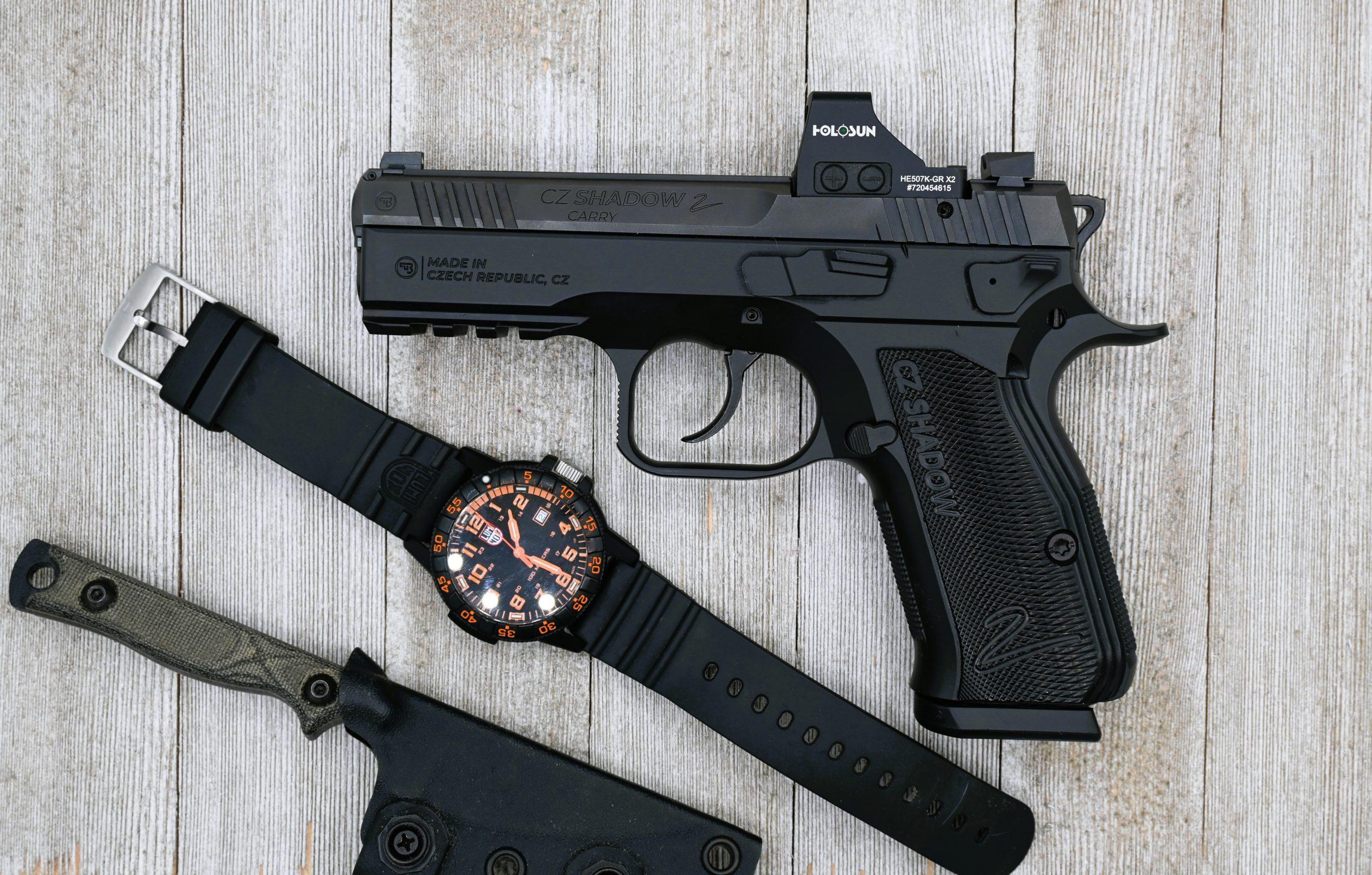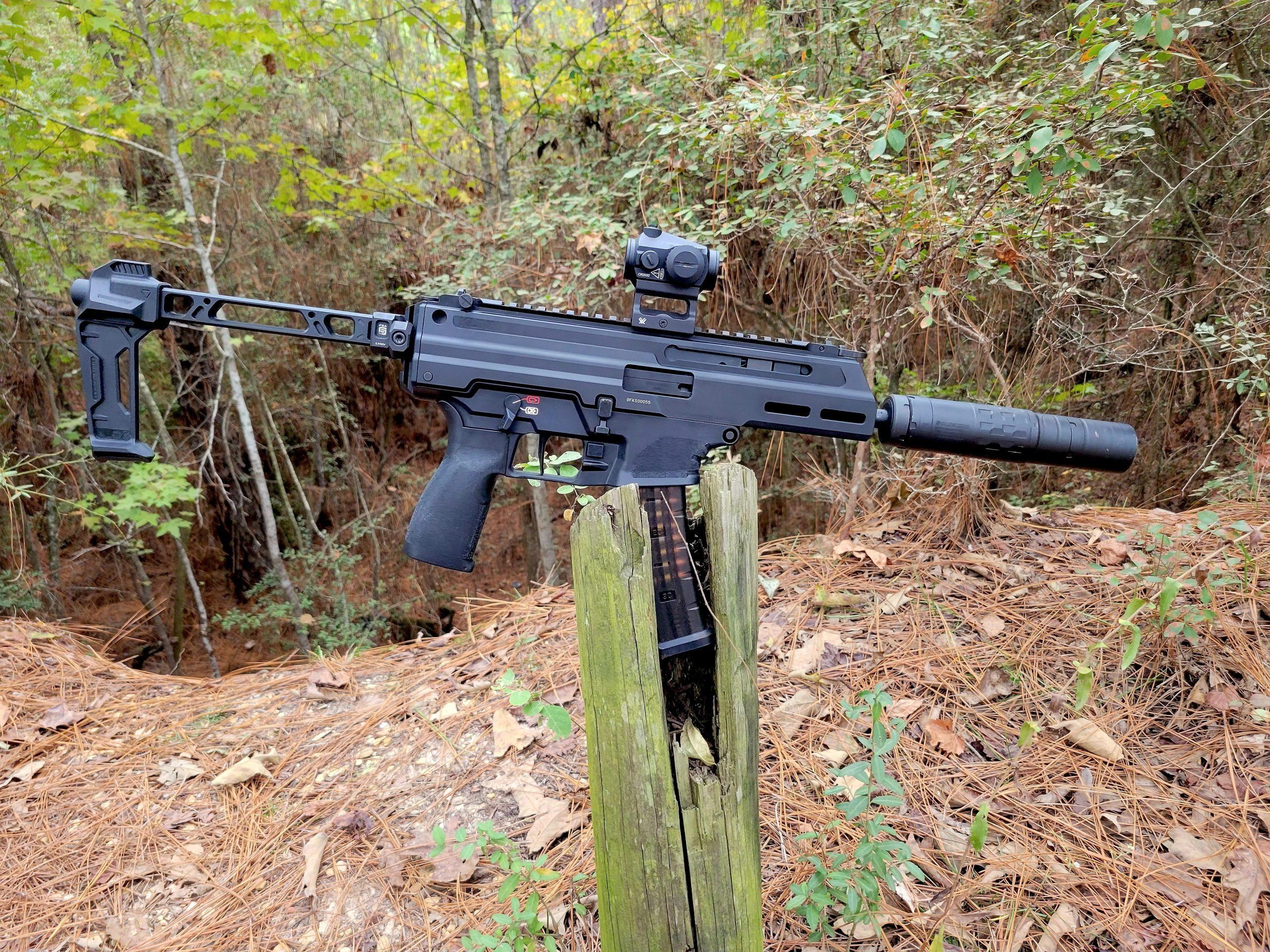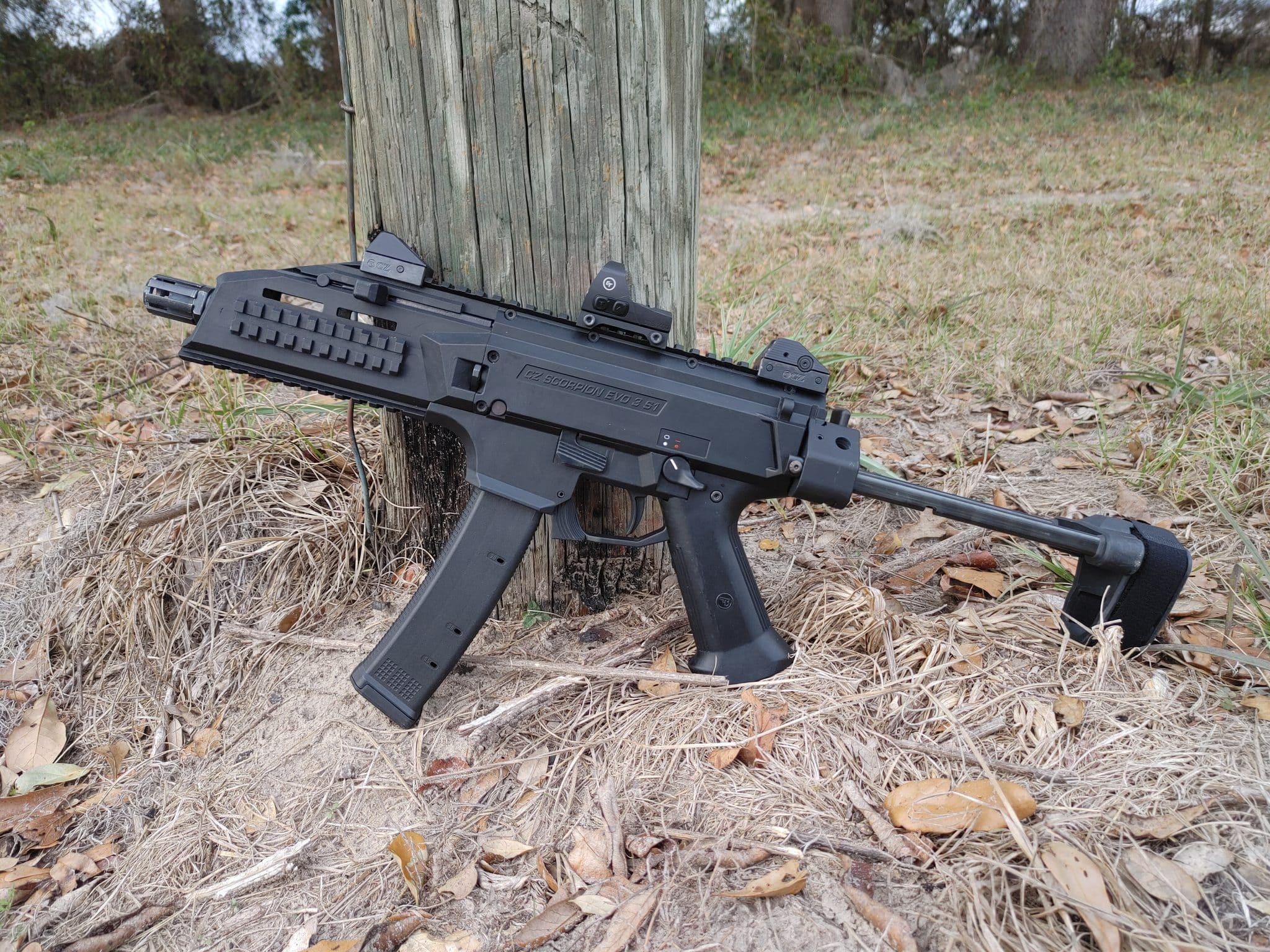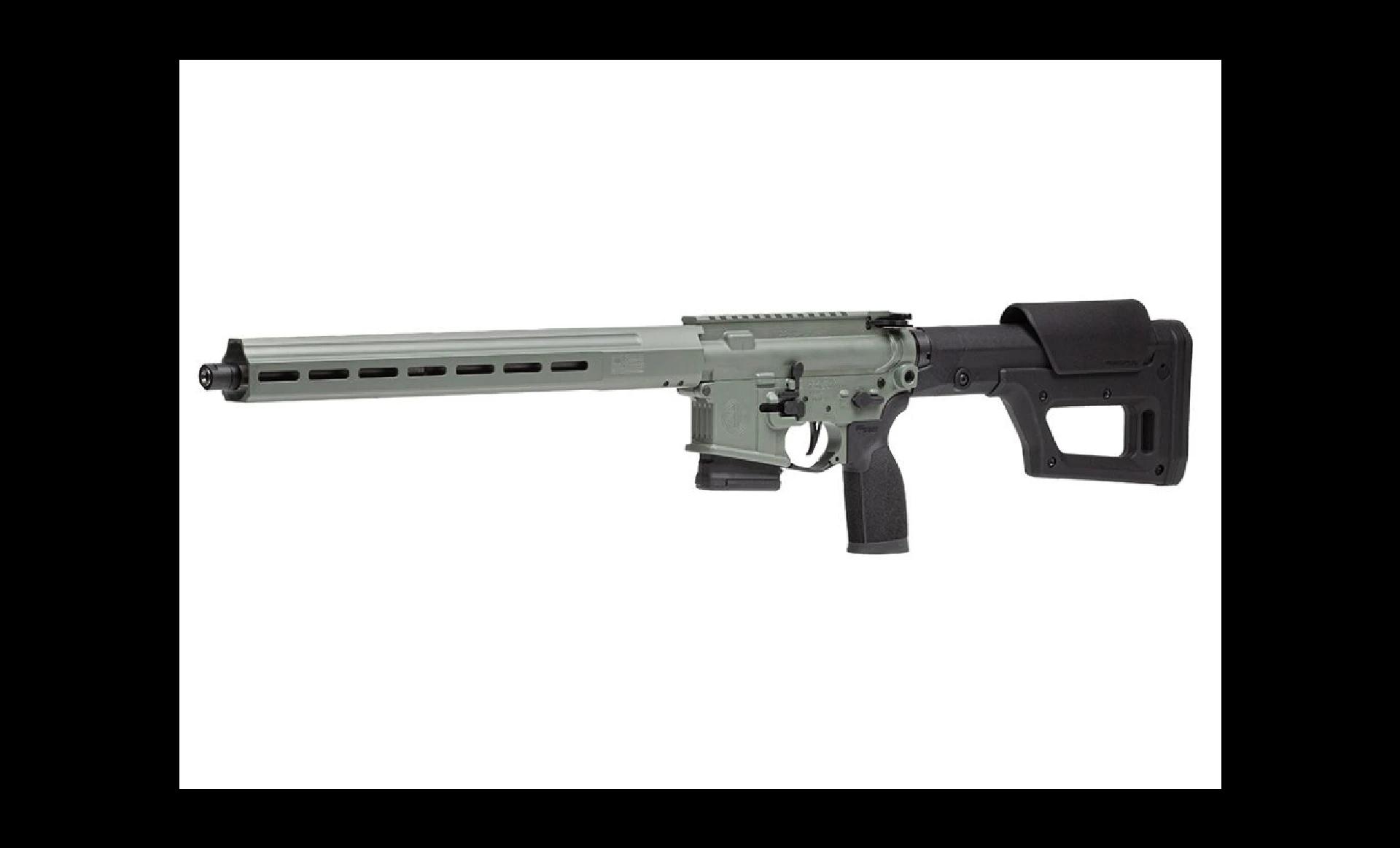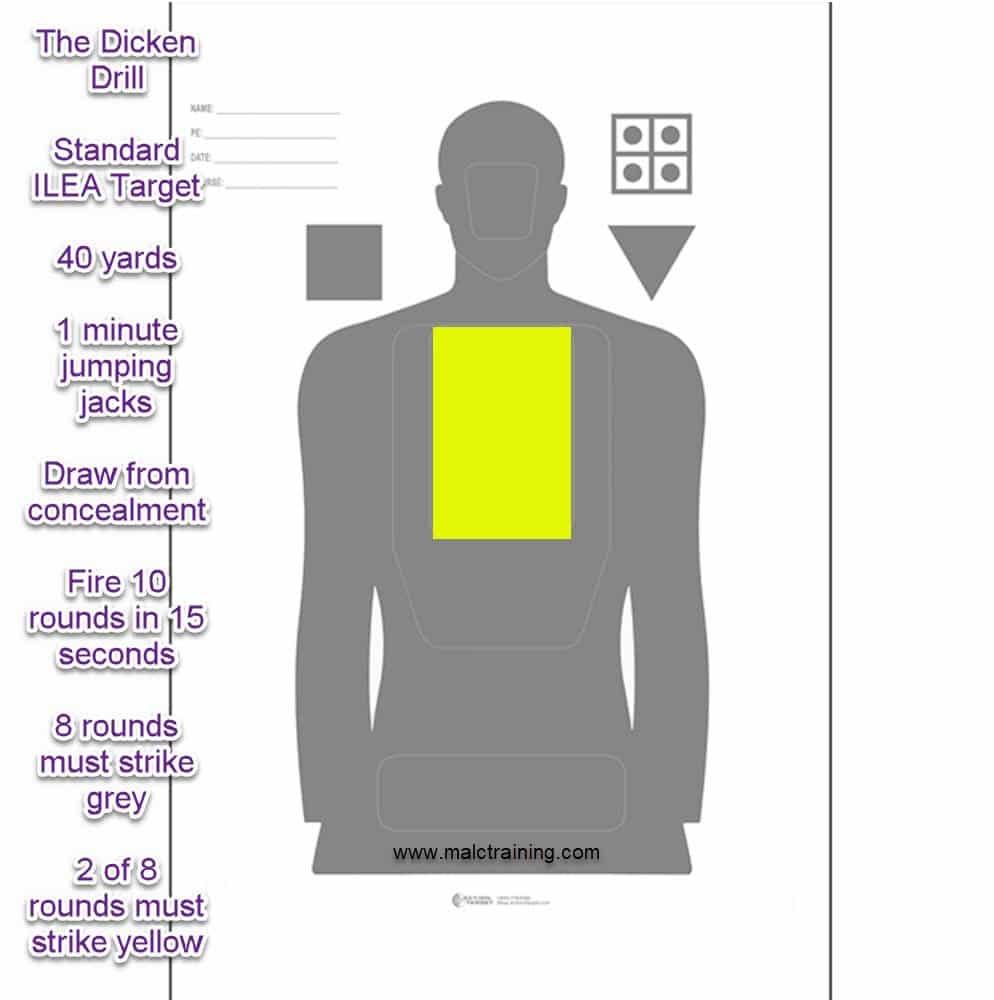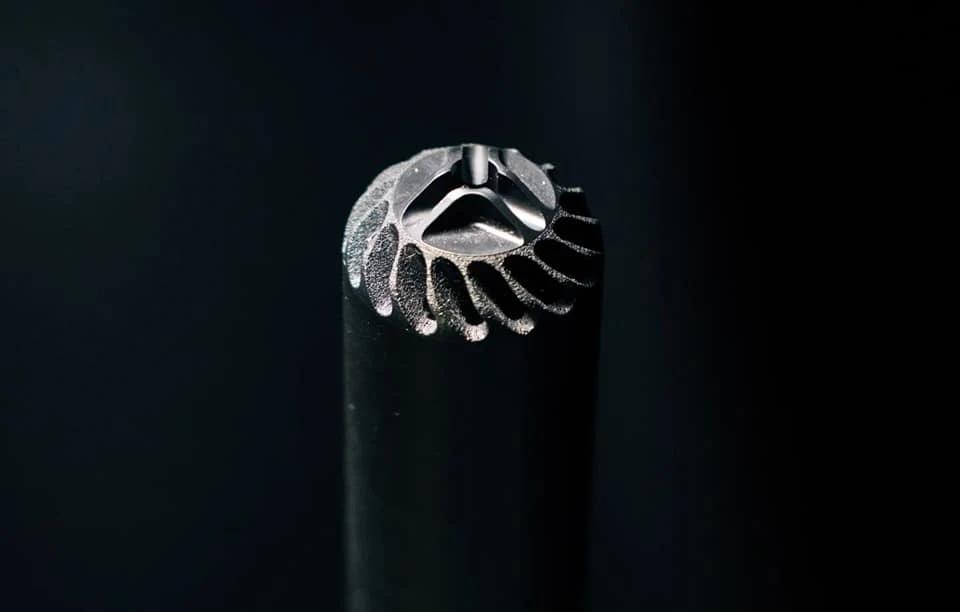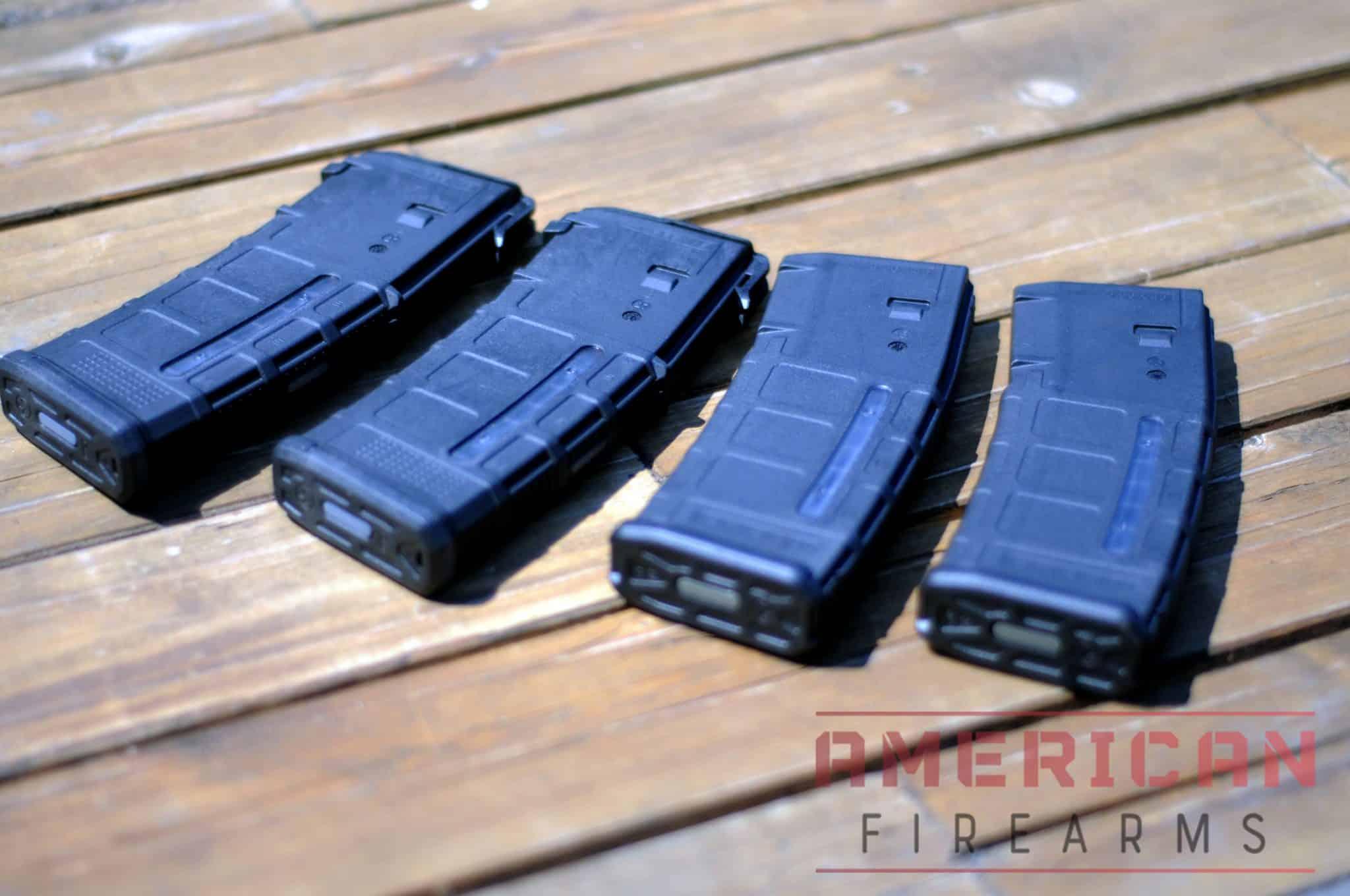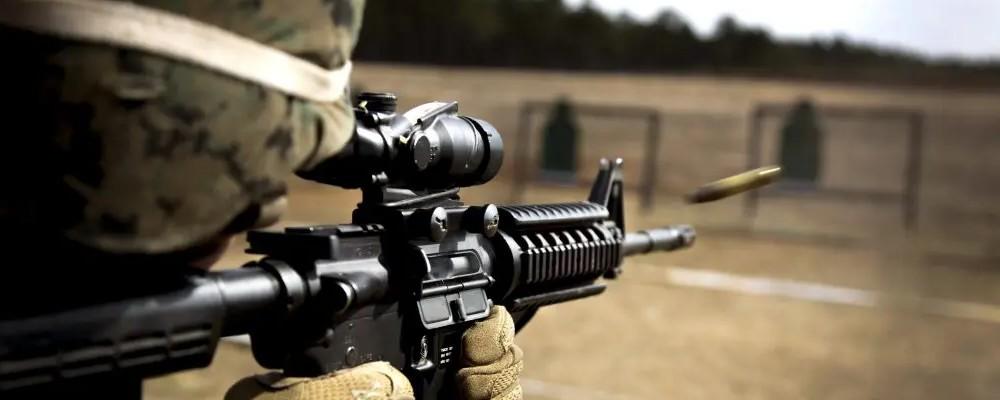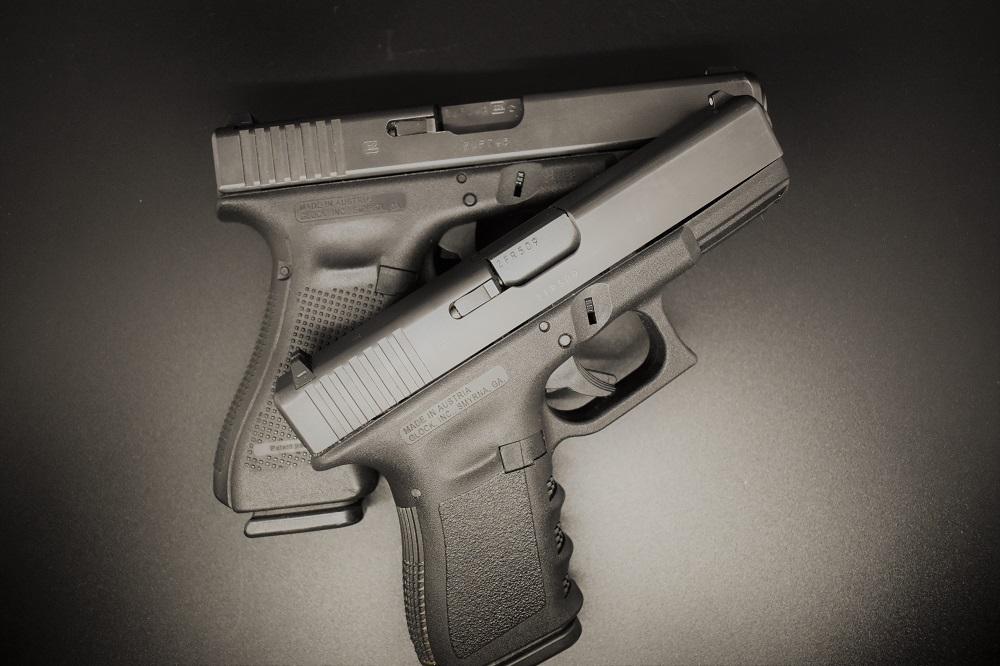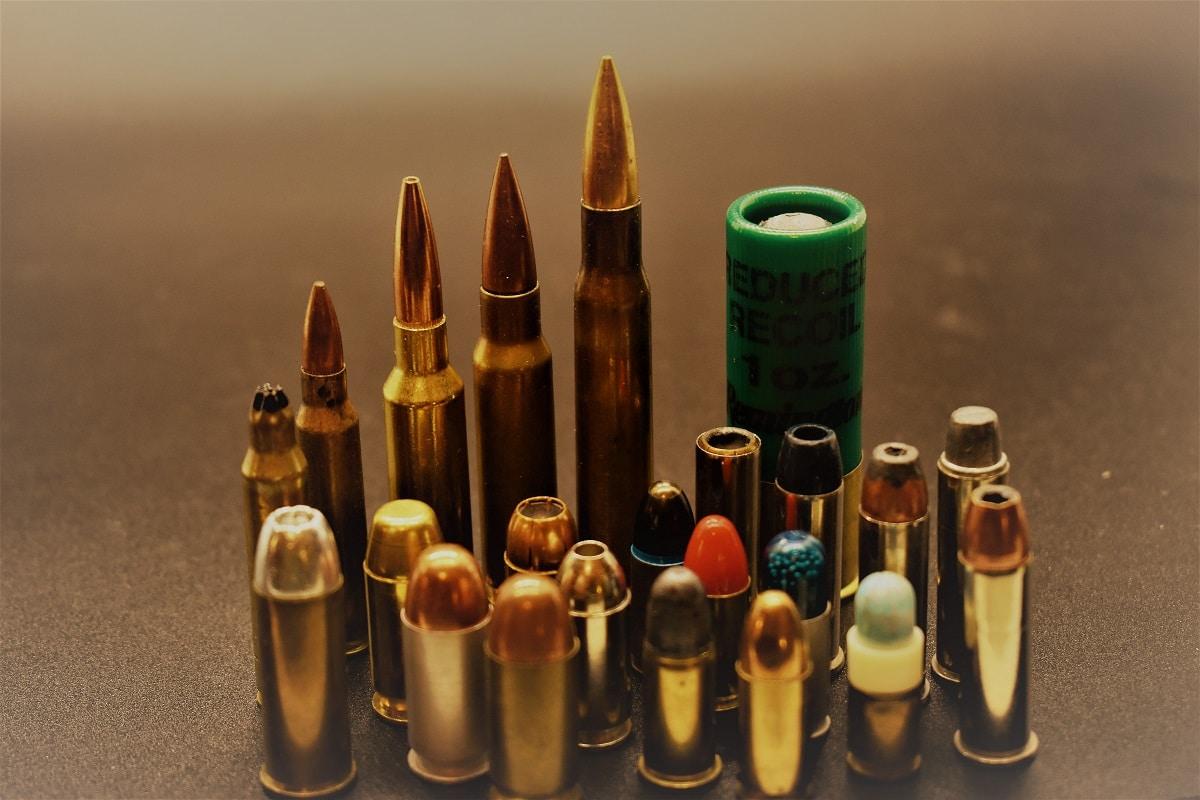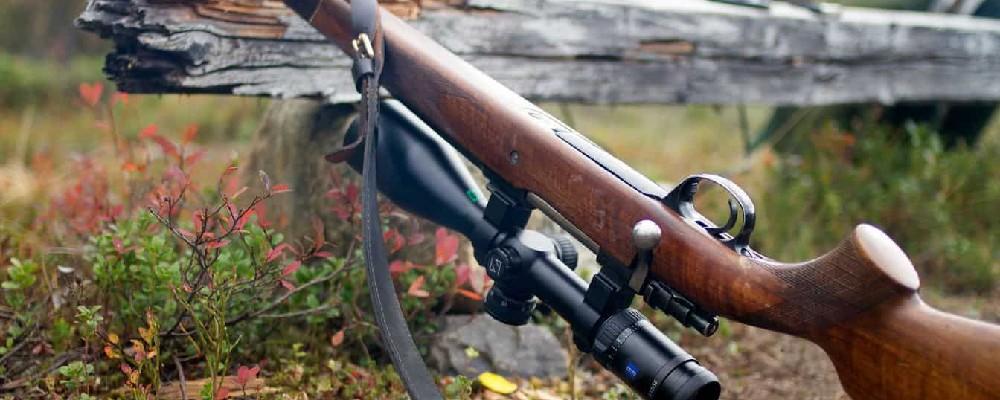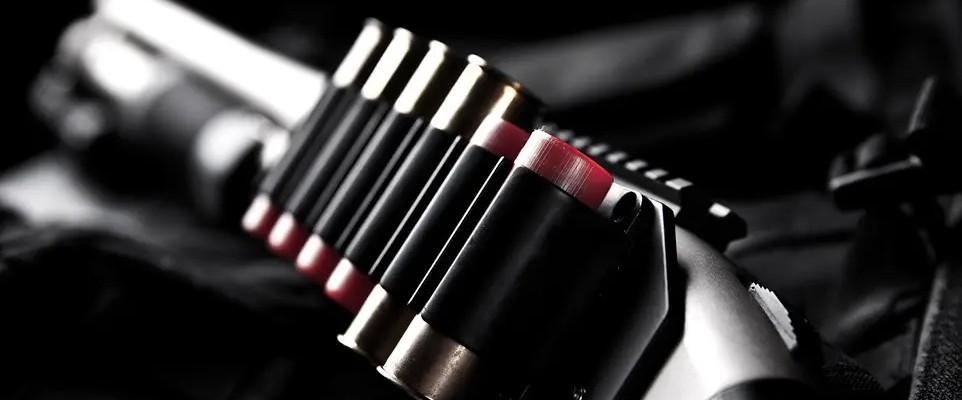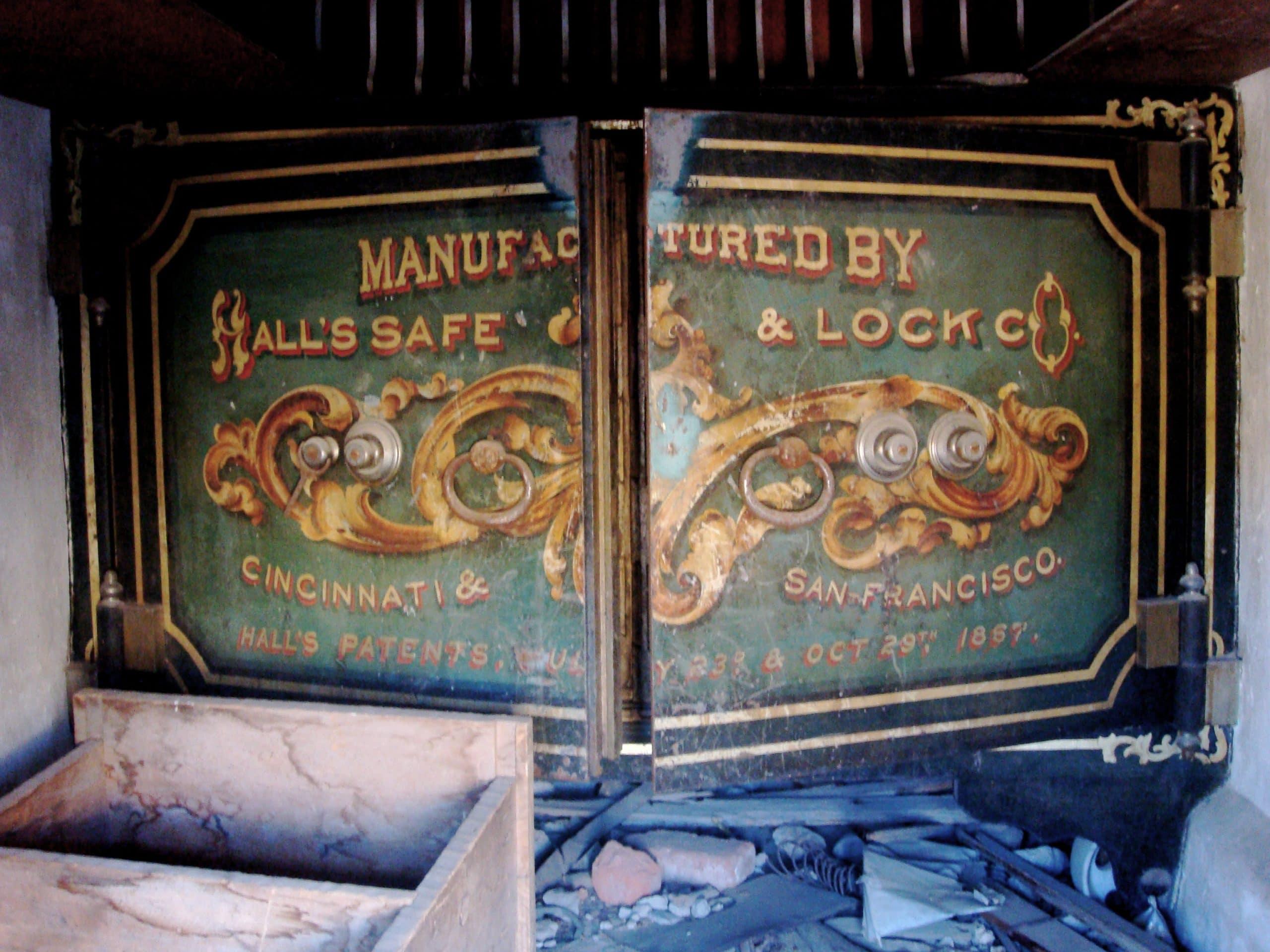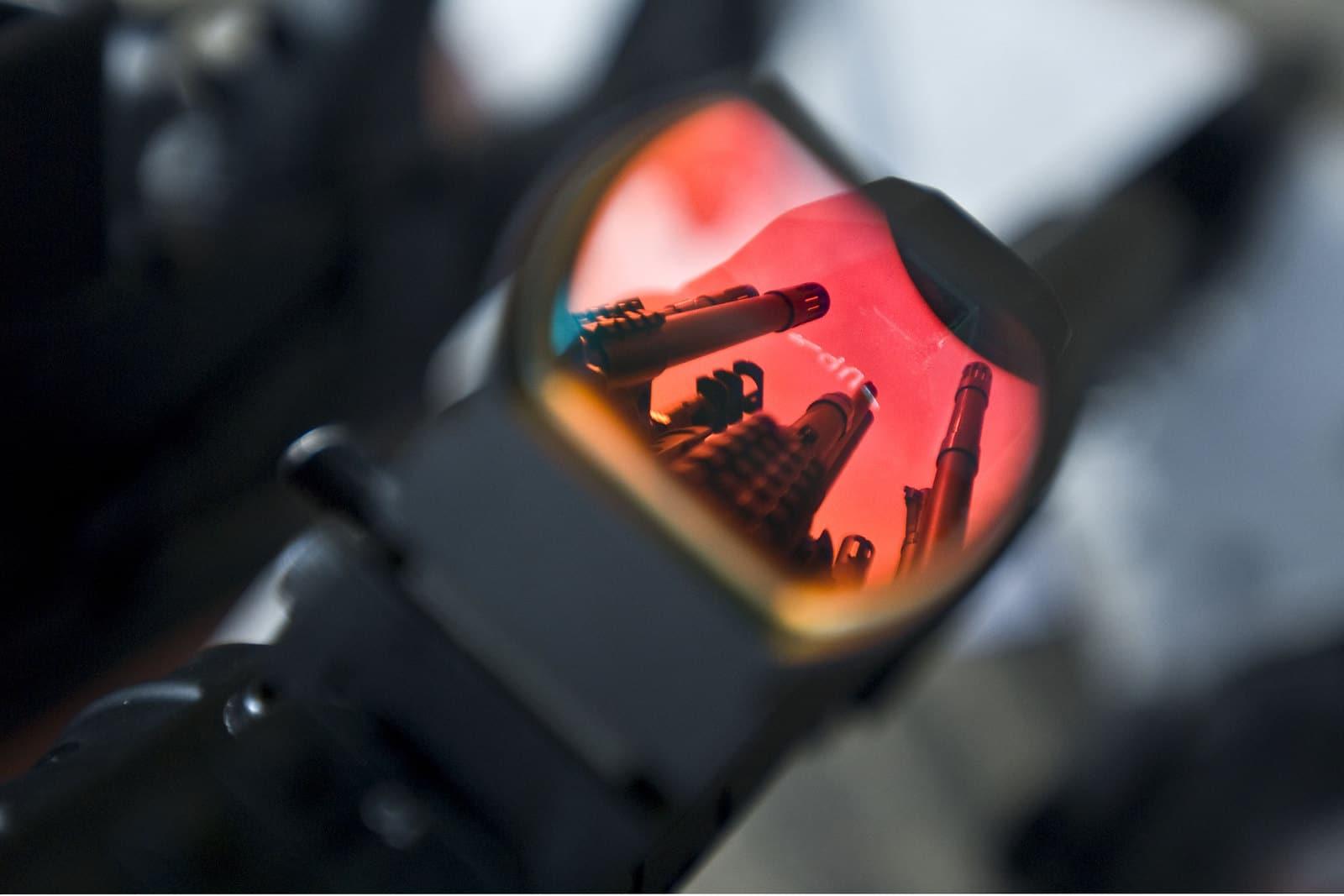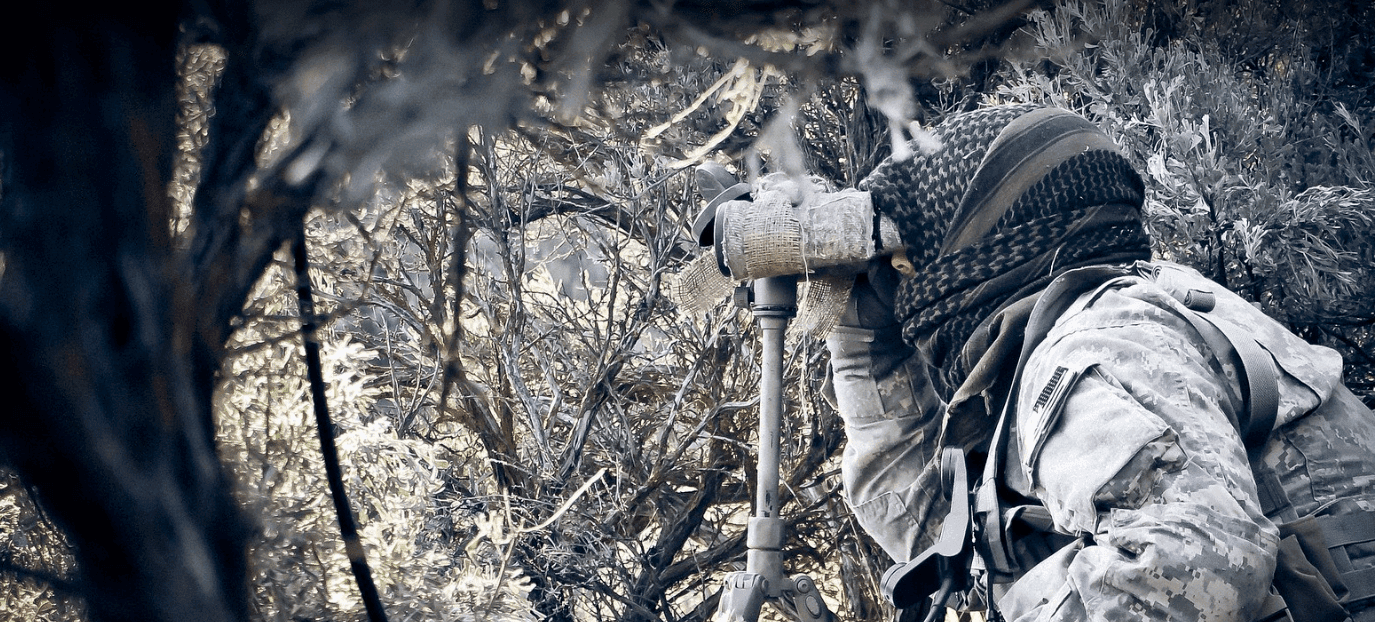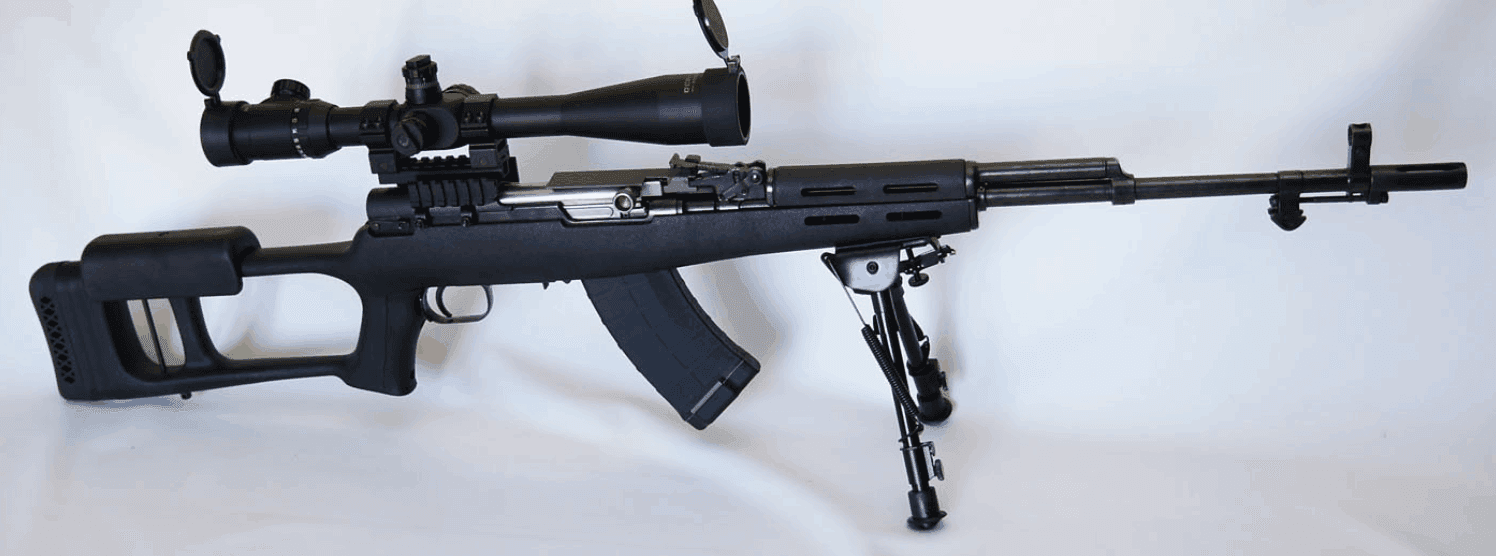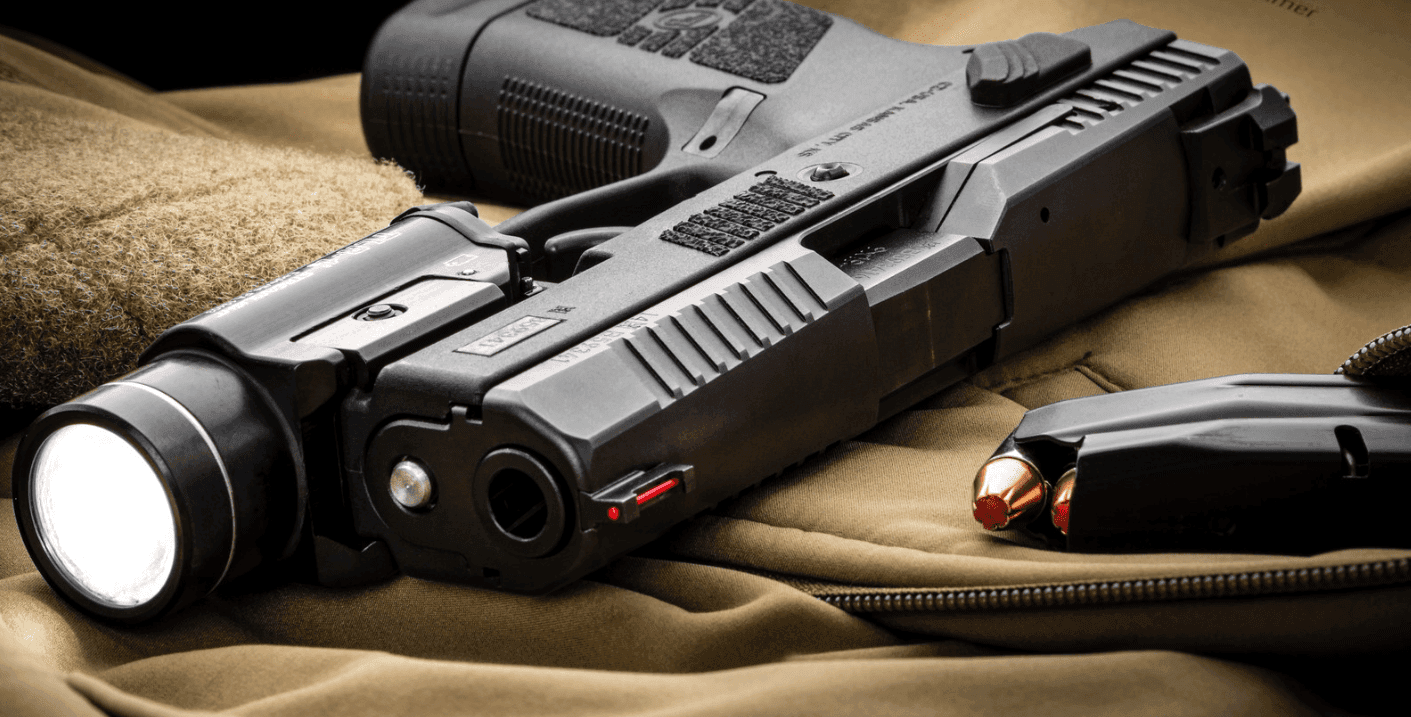The Colt 1911: The History & The Glory
Written By
Michael Crites
Licensed Concealed Carry Holder
Reviewed by
Editorial Team
Learn About The Editorial Team
Share:
Products are selected by our editors. We may earn a commission on purchases from a link. How we select gear.
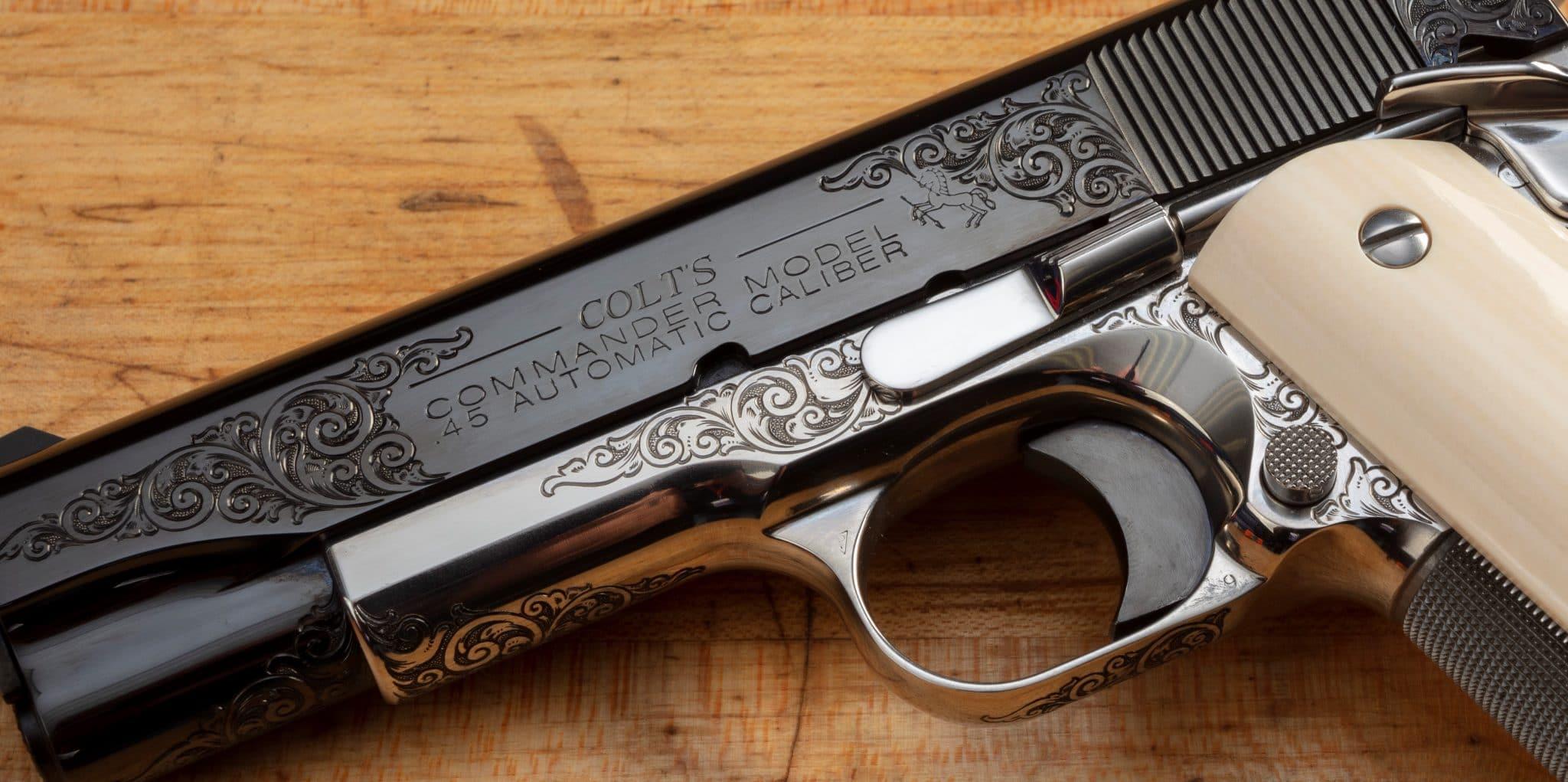
Updated
Oct 2025
While dozens of companies are busy making 1911-style pistols, only one name stands above all others as the inventor of the original– Colt.
With over a century in the game they kicked off, Colt is still the GOAT when it comes to John Browning’s Government model. We turn back the clock to investigate how Colt became synonymous with JMB’s most iconic pistol.
In This Article
Who is Colt?
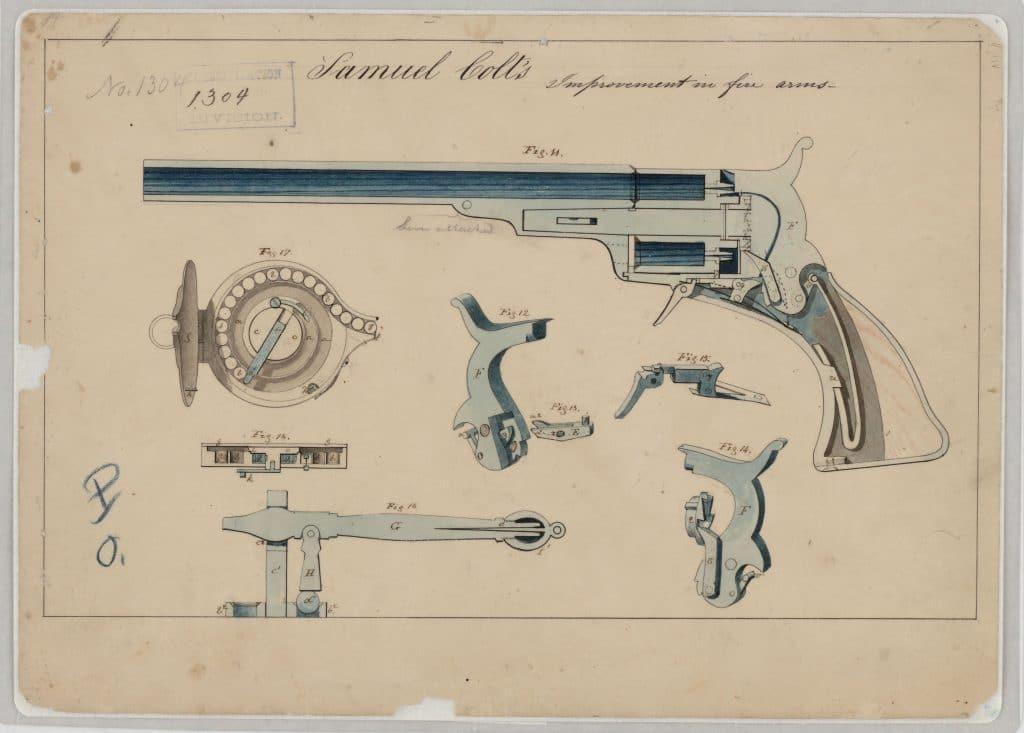
Predating Smith & Wesson and almost any other American gun company you can think of Samuel Colt in 1836 was issued a U.S. Patent for the first Colt firearm and builds his first factory. Just a decade later, his Walker revolver was the most powerful handgun on the planet and was soon adopted by the Texas Rangers back when the Lone Star State still was a country.
Then came the Civil War and Colt’s 1851 and 1860 pattern wheel guns were standard issue–often on both sides of the conflict. By 1873 the company had introduced its Single Action Army, which became one of the most famous handguns in history and was so iconic in winning the West that it was dubbed the “Peacemaker.”
Working in tandem with John Browning, Army officially adopted the Colt Model of 1911 just as it was gearing up for the Great War and went on to earn a reputation as a “Two World War” champion.
Then came the company’s “snake” guns as well as being the first manufacturer of the AR-15/M16 series for Uncle Sam and today Colt remains iconic, delivering some of the world’s finest, and innovative firearms throughout history.
You could rightfully say they are legendary, and no one really quite does the 1911 like Colt.
Army Pistol Trials
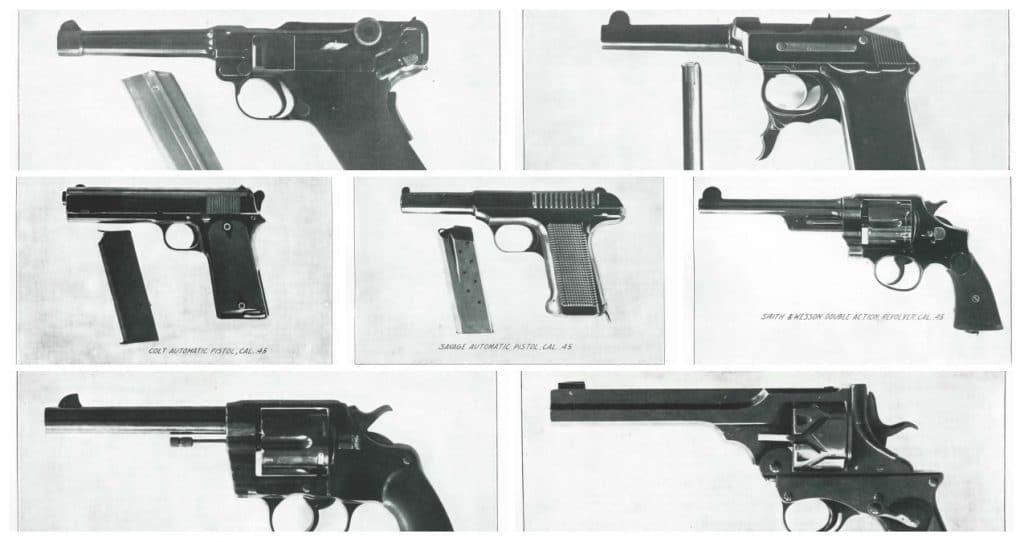
Following poor showings for the U.S. Army’s .38 Long Colt-caliber double-action revolvers in the Spanish-American War of 1898 and the resulting combat against Philippine insurrectionists in the early 1900s, President Taft’s Secretary of War, Jacob M. Dickinson, in December 1906 ordered a series of pistol trials to pick a new handgun.
The group of five hand-picked officers, using the primitive ballistics data compiled by then-Capt. John Taliaferro Thompson (later of “Tommy Gun” fame) and Major Louis LaGarde of the Army’s Medical Department, were given marching orders to proceed with a new handgun that “should have a caliber not less than .45.”
Convening in January 1907, the pistol trials were held at the U.S. Army-run Springfield Armory in Massachusetts and assessed 20 different submissions– both semi-automatics and revolvers– from the likes of Colt, Luger, Savage, Smith & Wesson, and Webley, among others. Major William A. Phillips of the Ordnance Department even submitted an in-house design.
In the end, the Army ordered 200 prototypes of each of the two final designs– by John M. Browning for Colt and Elbert H. Searle for Savage– and sent them into the field for four years of hard evaluation across the Army after which the two respective companies could submit an upgraded prototype using the lessons learned over the T&E period.
The final exam was a 6,000-round torture test in which the Savage had 37 stoppages while the Colt 1911 had zero. In the end, the modified Browning-designed Colt pistol was adopted in March 1911 as “Automatic Pistol, Caliber .45, M1911” and placed an initial order for 31,344 pistols. The rest is history.
Clones: Is every 1911 a Colt 1911?
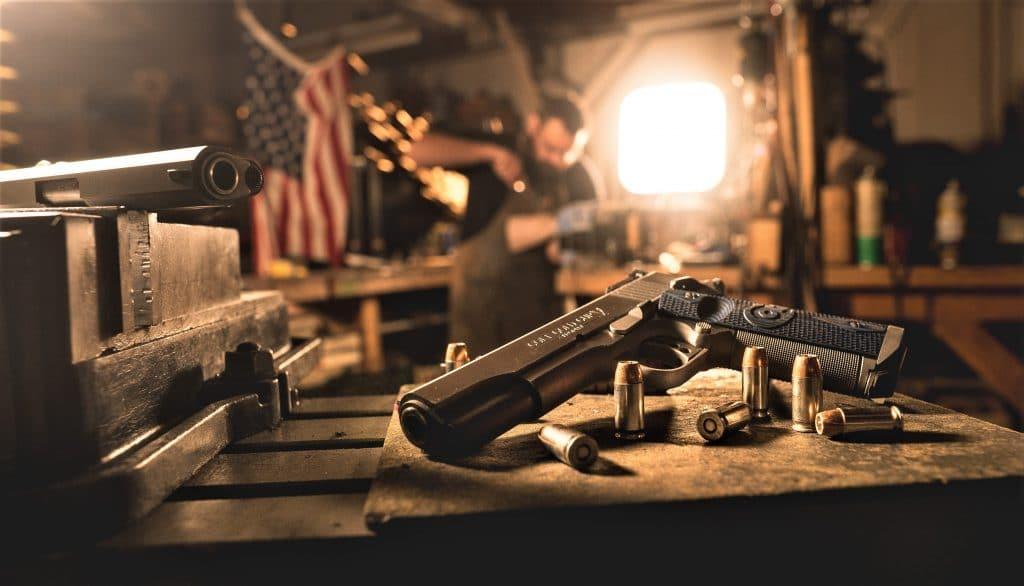
Between 1912 and today, well over 8 million M1911 type pistols (or, according to Colt for decades, the “Colt Government Model Pistol”) have been made for both military uses and for the civilian market.
To meet wartime needs, military production was farmed out to Ithaca, North American, Remington (the typewriter folks, not the gunmaker), the Army’s Springfield Armory, U.S. Switch & Signal, and UMC. Colt also licensed production to military arsenals in Argentina and Norway before WWII.
While there were hundreds of thousands of unlicensed commercial guns made during Colt’s golden era of production (1925 to 1970) by the likes of Spanish and Latin American makers such as Obregon, Ballester Molina Pistols, Star, Llama, and Union, the big boom in commercial clone production hit since the 1970s– once Colt’s patents lapsed– with frames and guns arriving from AMT, Armscor (who bought the Rock Island name in 1986), Auto-Ordnance, Baer, Caspian, Detonics, Enterprise, Essex, Kimber, McCormick, Mitchell, Norinco (China Sports), Randall, Olympic/Safari, Nowlin, Para-Ordnance, Springfield, SVI, STI, and Wilson along with big names such as Ruger, Sig and Smith & Wesson joining the market more recently
Of those millions of guns, Colts account for a small, more premium, slice of the pie, but hey, you know what they say about imitation and flattery, right.
Model of 1911 U.S. Army
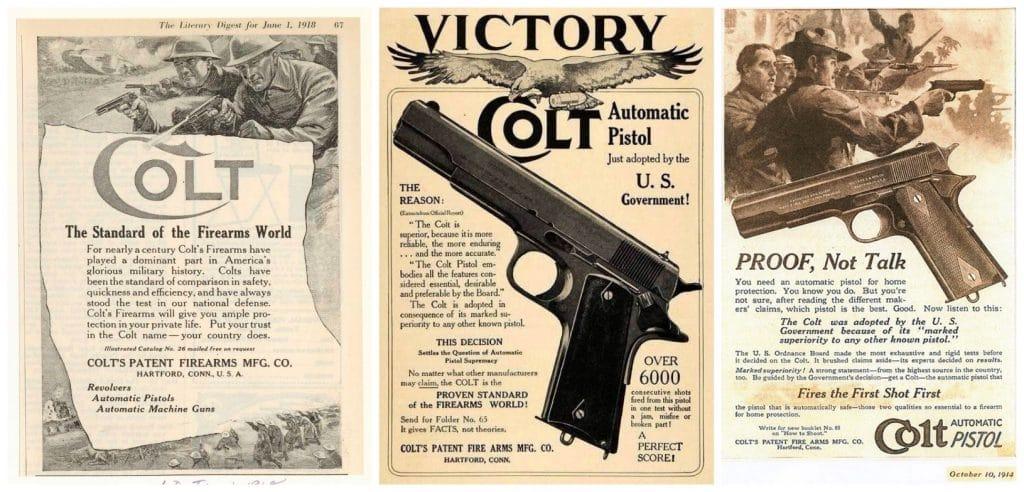
These were Colt’s early military contract handguns introduced just a few years before World War I (1912) and continued delivery through 1924, with the original guns having a deep charcoal blue finish and guns produced from 1918 onwards carrying a simpler finish whose darker hue earned these late-model guns the moniker of “Black Army” pistols. In all, Colt would produce some 629,000 of these “Model of 1911 U.S. Army” marked guns, all with now-classic first generation features such as straight mainspring housings and full trigger wells with long triggers.
The Colt “Black Army” commemorative recalls the classic “Model of 1911 U.S. Army” marked guns of about 1918. Note the short sights, straight mainspring housing, and full trigger wells with a long trigger.
Early Colt 1911 Commercial Models
As soon as Colt won its initial Army contract for some 30,000 guns for Uncle Sam, it wasted no time in advertising the Colt “Government” model to the public, complete with ad copy regaling readers with its successful 6,000-round torture test at the hands of America’s GIs. These were by and large the same gun as the Model of 1911 U.S. Army, chambered in .45 ACP with a 5-inch barrel, fixed sights, 7 shot magazine, flat mainspring housing, polished blue finish, and checkered walnut grips.
What they did not have was the Army markings and were produced in serial number range C1-C138,532 between 1912 and 1925, with the “C” commonly believed to stand for “Commercial” models.
Change to the M1911A1 standard
The “A1” designation came about in 1924 after Army-mandated upgrades to the standard Government model to include a thicker front sight, an arched and checkered mainspring housing (to improve aim/ergonomics), a longer hammer (to help curb reports of slide bite on firing), a shorter, lighter trigger pull with checkering and relief cuts in the guard to help those with smaller hands, and a longer grip safety tail (see hammer bite).
Colt also requested 40 additional changes to update the gun from its circa 1912 manufacturing practices to the company’s more current production line. These adjustments included a new-style slide stop, alterations of spring sizes, and many dimensional changes– for example, the rear sight aperture was changed from .06″ to .07″ wide and from .04″ to .05″ deep (i.e., from .003″ to .0035″ radius. In other words, changes only the QC guy would have noticed.
While there were about 10,000 so-called “transitional models) made in 1924 that incorporated some features from both standards– largely to use up old stocks of components that had already been paid for and accepted– the new 1911A1s would start at about SN 710,000 for military contract guns and C138,533 for commercial models the next year.
Further, the bright blue finish only carried over on the military models until about SN 740,000 when Colt switched to a more utilitarian parkerized finish.
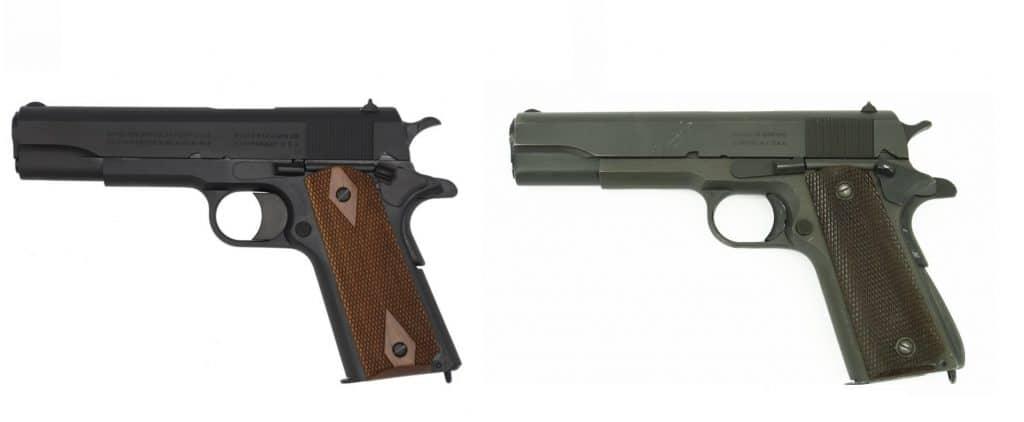
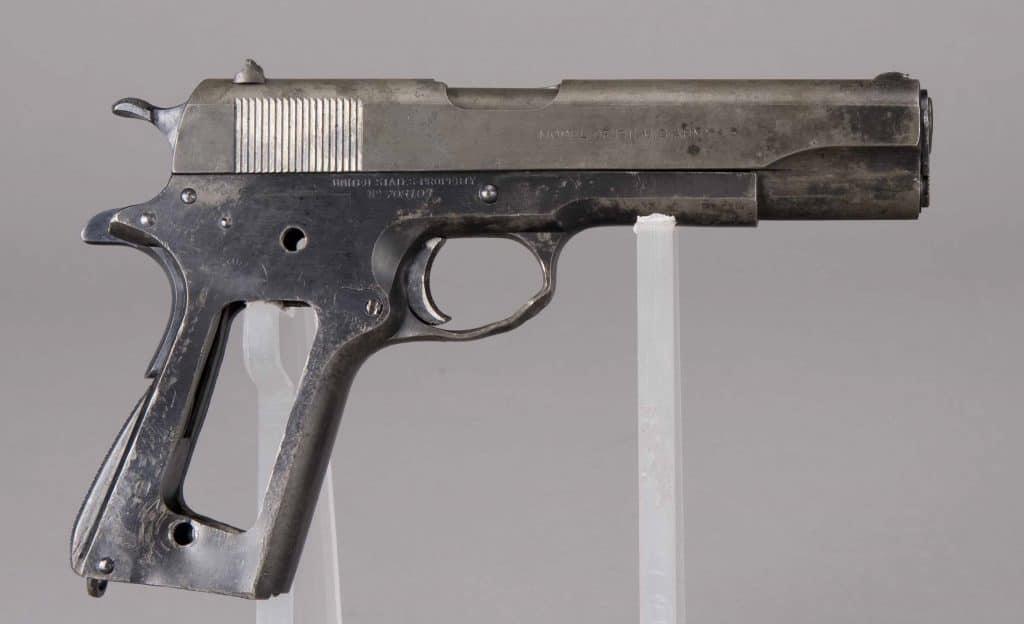
Automatic Pistol, Caliber .45, M1911A1
Colt produced about 438,527 military model 1911A1s between 1924 and 1945 when it closed out the production for the Army. By comparison, Remington-Rand, Ithaca, Union Switch, and Singer Sewing Machine Company (yes, that one) delivered over 1.6 million virtually identical pistols to the military during WWII, pointing out why Colt guns get a premium on the .45 market.
All of these are marked “M1911A1 U.S. Army” on the slide and most in circulation have been extensively rebuilt by government arsenals, including some being rewelded from surplus guns that were scrapped by the military. These wartime-built guns remained in service with the military well into the 2010s.
Retired Green Beret Jeff Gurwitch covers the “re-adoption” of the M1911A1 by U.S. Special Forces after 9/11 in the below very interesting video. The half-hour piece covers the timeline, how it was employed, accessories, and its performance in Iraq and Afghanistan.
Colt M1911A1 Commercial Models, pre-1970
While Colt had switched to a thick parkerized finish on its 1911A1 military contract guns in 1941, the company largely retained its standard blue finish for commercial models between 1925 and 1970. Also standard were checkered walnut grips rather than the plastic grips used on military models, checkered arched mainspring housing, relief cuts in the frame for improved trigger reach, and longer grip safety spur while retaining the classic grip angle.
In 1929, Colt began offering the 1911A1 commercial models in “Super . 38 Automatic” in addition to the standard .45ACP (Automatic Colt Pistol), a caliber that remains popular today almost a century later.
Pre-WWII (circa 1925-1942) Colt M1911A1 commercial models run the serial number range C138,533-C215,000 while post-war serial numbers until 1950 ran with serial numbers C221,000-C240,227.
After 1950, Colt changed commercial 1911A1 production to using a “C” suffix rather than as a prefix, i.e., 240,228C, and closed out the series in 1970 with 336,169C.
National Match Guns
As part of the 1924 contract with the US Army for the new M1911A1 model, Colt delivered SN 709001 to 710000 for National Match use. These guns were hand-fitted and finished at the Colt factory and included match-grade barrels that make for a very accurate gun.
These Colt competition pistols were often later reworked by the government’s armorers at Springfield Armory to make them highly accurate competition pistols, complete with tightly fit bushings and extended sights for an even more accurate gun.
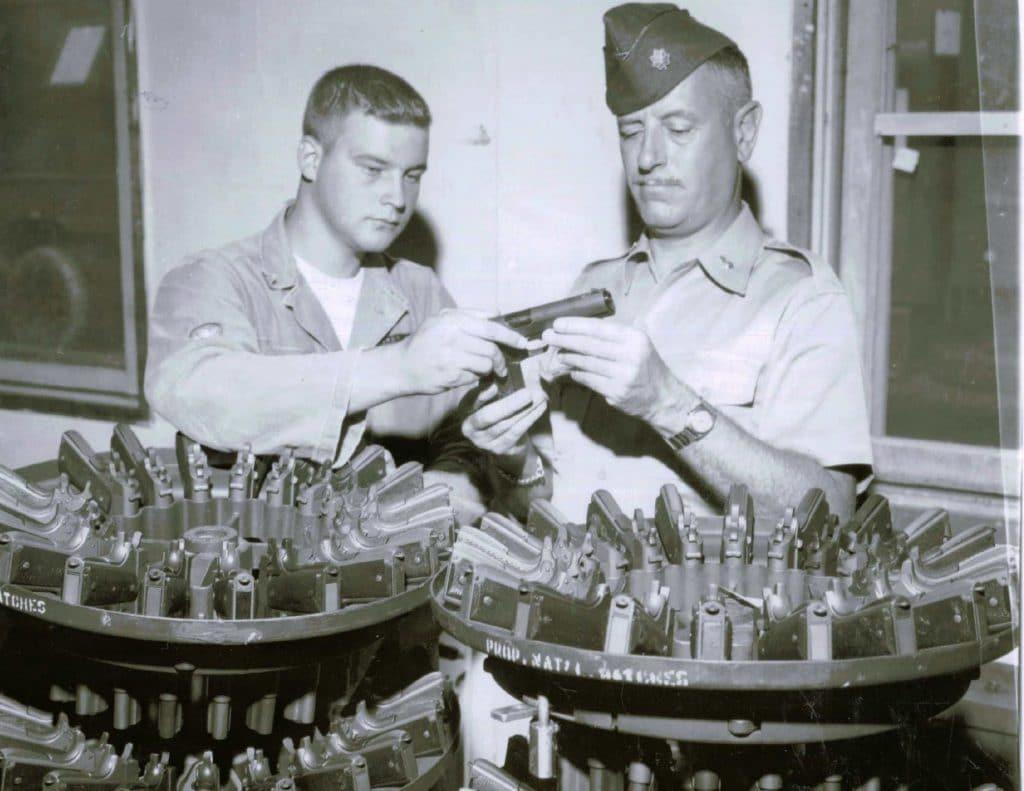
Commercial production of the National Match Colt 1911A1 in 45ACP, complete with a hand-honed action, match-grade barrel, blue or nickel finish, and a choice between fixed target or adjustable sights with only about a quarter produced in the latter. There were just 4,813 commercial National Matches manufactured between Feb. 9, 1932 – Sept. 16, 1941, falling into the C162997-C204640 serial number range with “National Match” stamped into the right side of the slide.
Starting in 1955, the Product Engineering Branch at the Army’s Springfield Armory designed a special barrel, barrel bushing, and barrel link for incorporation into the otherwise standard M1911A1 in preparation for that year’s National Matches.
Throughout 75 follow-on technical data packages, small batches of standard .45 pistols were upgraded to National Match quality with no less than 5,278 conversions done by 1967. Going far beyond the barrel, bushing, and link, refinements would be done to just about every internal part as well as to the frame and slide itself.
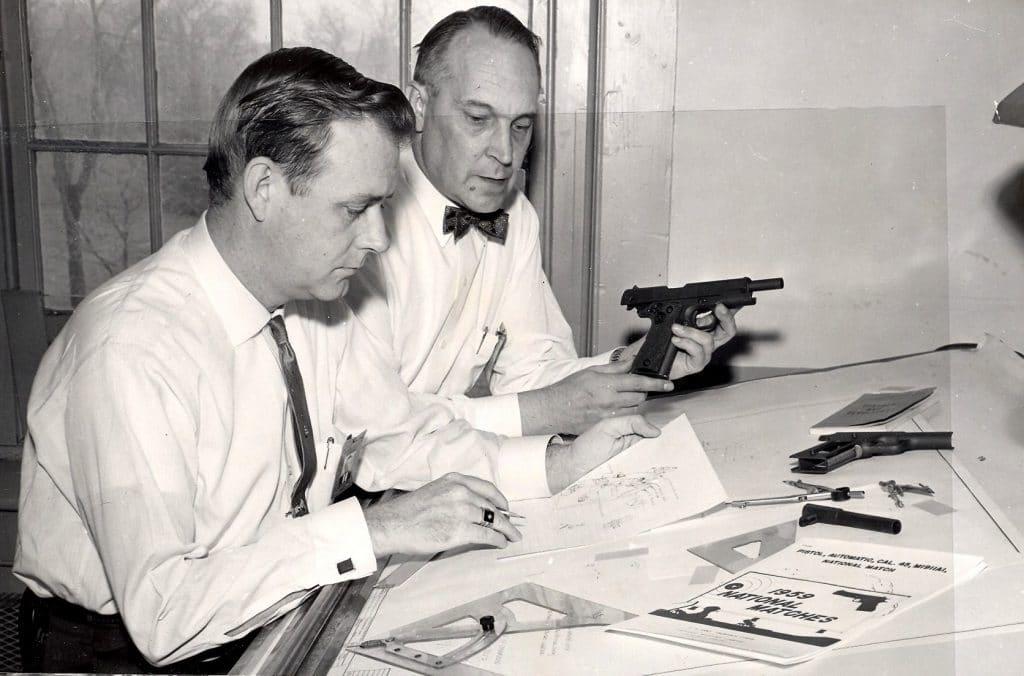
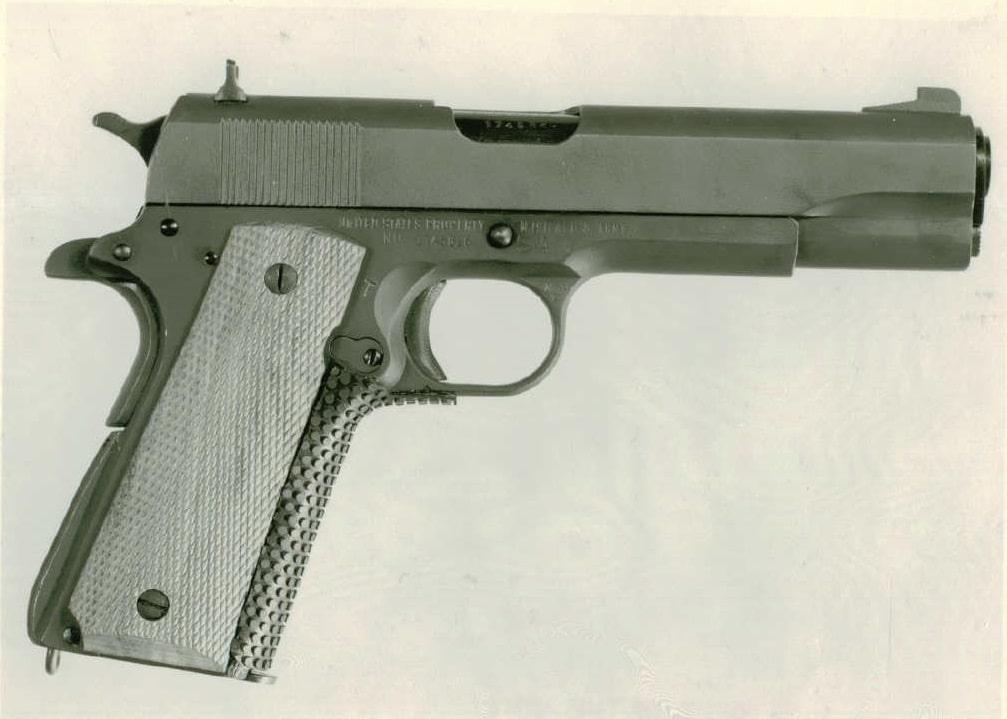
Between 1957 and 1970, Colt resumed production of commercial National Match pistols for the civilian market that included a match grade barrel, royal blue finish, and a new design beveled barrel bushing and recoil spring plug. Hand fitted and with a longer trigger, a hand-fitted slide with an enlarged ejection port, and adjustable target sights, they carried an “NM” suffix on their serial number.
After 1970, Colt would bring the National Match back for limited runs and offer “NM” style barrels and bushings on other 1911s in its catalog, but by and large, the company replaced it with the Gold Cup National Match Model after 1971.
70 Series or 80 Series?
Remember, the original Colt 1911 design was a product of field testing by Army officers who typically had overseas combat service in the Philippines and during the Spanish-American War.
As self-loading pistols in the early 1900s were a novelty, it was thought that a variety of active and passive mechanical safeties were needed to keep Uncle Sam’s regulars– who at the time were often immigrants or recruited from among the least educated of the general population– from having frequent negligent discharges.
This meant the original M1911 had both a grip safety and a manual thumb safety with U.S. Army Ordnance officials maintaining it was virtually impossible to accidentally fire the pistol without purposely depressing the trigger.
However, it is theoretically possible for the legacy pistol to fall from a height and strike a hard surface, sending an energy wave into the gun that, if enough force were carried with it, could cause the firing pin to rebound into a chambered round.
This led to a redesign in the early 1980s by Colt to add what was termed a “supplemental firing pin safety” that incorporates a firing pin lock plunger that must be pressed into place by an action of the trigger to allow the pin to move forward.
This “80 Series” style gun eliminates the slim possibility of a loaded and chambered 1911 firing while dropped but adds some “mush” to the trigger pull as it has to move the aforementioned plunger to allow the firing pin to do its thing.
To differentiate between the new style and old style, the more legacy designs are referred to as Series 70 guns, which still offer the shorter trigger and light trigger pull.
Brownells has a good primer on the difference between the Series 70 and 80, for those who are curious.
Commander, Officer, and Defender sizes
Introduced in 1950, Colt’s Commander series pistols were an effort to make the 1911 Government into a more compact-sized handgun. Cutting the weight, they had an alloy frame and mainspring housing. Cutting the length, the barrel length was only 4.25-inches with a correspondingly shorter slide, slicing almost an inch off the overall length of the gun. This left a full-sized grip and the 7+1 shot .45ACP capacity but in a gun that could be more easily carried.
This was augmented by a 9+1 capacity of 9mm, which offered soft recoil along with the additional capacity.
Colt produced these in their original format until the late 1960s when they unsuccessfully submitted the design to the Army as the M1969 General Officers Pistol in an attempt to replace the aging Colt .32 ACP Model M General Officers pistol.
The company subsequently updated it into a Series 70 gun in 1971 and a Series 80 in 1983. Today, Colt still makes Commander-length 1911s in the Colt Combat Unit Rail Gun (CCU), Combat Elite, Combat Commander, and Lightweight Commander series.
Going smaller than the Commander-sized 1911s, Colt introduced the Officer series in 1985. Using a 3.5-inch barrel format and a grip frame that was shortened in height to the point that it could only use a 6-shot magazine, the Officer was a salute to the Army’s converted M15 “General Officer Model” guns that were custom made from standard M1911A1s by government armorers.
A product of their time, when first introduced these were 80 Series guns. Today, Colt has largely phased out the Officer-sized 1911 for what they term the Defender model.
The Defenders first appeared in Colt’s catalog in 1998 with a 3-inch barrel and a very svelte 22-ounce weight while still keeping a steel frame and slide. While originally offered in .40S&W, 9mm, and .45ACP, the .40 has faded away into history and the company for a while decided to call the gun the Colt New Agent, but the current variant of the Defender, a Series 80 gun with an upswept beavertail grip safety, is still kicking.
What does the CZ buyout mean?
The Czech CZ Group– a large European conglomerate that owns not only CZ but also Brno Rifles, and Swedish optics mount maker Spuhr– purchased Colt’s American and Canadian operations in 2021.
Company officials have said they “are excited to join forces with CZG which will be a powerful combination for both brands and for our customers” and Colt has been making its standard fare into 2022 with no signs that CZ is making any outward changes.
Firearms industry analysts feel the acquisition of Colt by CZG is primarily so that the European firm will have more reach through the former’s military and LE channels overseas as Colt has been selling M4 style rifles for generations around the world.
With that, you can expect Colt’s most popular semi-automatic pistol, the 1911 line, to continue to be front and center, with potentially more distribution in Europe than before.
Moreover, CZ has owned the Dan Wesson brand for the past 15 years. Based in Kansas City, Dan Wesson is a U.S.-based gun manufacturer that specializes in the small-batch gun-making of a line of well-received 1911-style pistols, with many semi-custom designs including long slides and 10mm versions especially pitched to the hunting and competition market.
It is a no-brainer for that to continue under any new CZ-Colt business model and it should be unsurprising if Colt’s Custom Shop teams up with Dan Wesson’s Custom Shop for some tricked-out 1911s in the near future.
Life cycle, or "How long will a Colt 1911 Last"
When talking about the reliability and durability of 1911-type pistols, a few things need to be said. Old, worn-out former military guns and homebuilt “kit guns” dating back to the 1970s and 80s are floating around in quantity, giving the platform an undeserved reputation of being jam-prone rattle traps.
Keep in mind, though, that a lot of the fitting on home builds back in the day was hobbyist level and former military guns were often only rebuilt at the arsenal level after it became worn or was damaged, lacking what we would term a maintenance schedule these days.
Still, it was not unheard of for military model M1911s to endure 70 or 80 years in Army service, chalking up well past 25,000 rounds on the frame while the internals, slides, and barrels were swapped out with newer “hard” variety replacements.
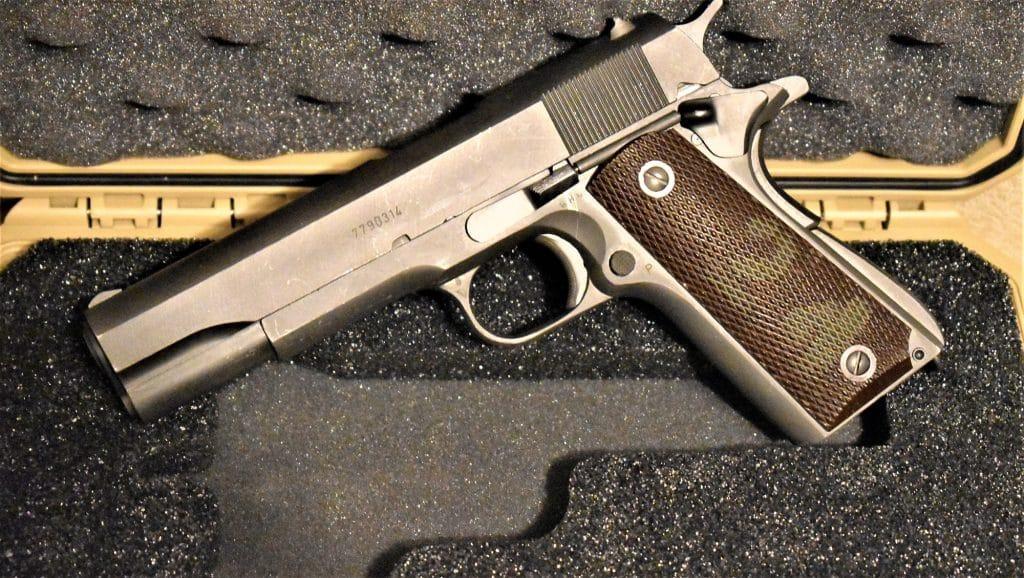
Today’s 1911s, especially when talking about new commercially-available Colts, are typically built with high-quality components, and fit to ideal, CNC-regulated clearances, then correctly timed and verified through a QC process.
This means the pistols’ durability will vastly exceed that of military-issue handguns of yesteryear. Whereas barrel life on military pistols in the 1940s often tanked after 5K rounds, today’s will endure much more than that, typically over 50K if maintained properly.
Clean and lubricate the gun once a month (if it’s a carry gun), or every time you go to the range/every 300 rounds, whichever comes first. Change out the recoil spring every 2,000 rounds, the firing pin spring every 5,000, and the hammer springs every 25,000 rounds.
Learn how to inspect– and, if necessary, replace– your firing pin stop, slide stop, extractor, sear and hammer, and your frame, provided it is steel, will likely outlast you, able to endure 50-100K rounds or more before it is out of spec. For most, this covers several lifetimes of use.
How does this compare with a more modern polymer-framed striker-fired gun? Well, Glocks for example are well-known and extensively documented to have reached more than 200,000 rounds– changing springs and minor parts along the way along with following a cleaning and lubrication schedule.
Does that mean that today’s “plastic fantastics” are better guns? Not necessarily, just that they have been designed to wear better and longer than the all-metal hammer-fired single actions of yesteryear.
In Closing...
These days, scores of gun manufacturers on at least four continents make clones of various Colt 1911 models. Some of these clones are poorly done, while some are arguably better than Colt has ever produced and come with the correspondingly high price point to prove it.
However, for the money, it truly is hard to turn down a modern Colt-made 1911 variant.
Further, when it comes to retaining resell value, folks with a Colt clone always must argue why their gun is on par with or better than a Colt while many gun enthusiasts who own an actual Colt 1911 just let the gun speak for itself. It’s not enough to own just any 1911 — it’s specifically the Colt 1911 that gets the love.
That’s something that two World Wars and 110+ years of reputation will get you.
Further Reading
- NRA National Firearms Museum, The 1907 Army Pistol Trials, December 22, 2016
- National Park Service, Museum Collections, Semi-Automatic Pistol
- Huntinglife.com, Taurus Shooting Team Captain Jessie Harrison Wins at USPSA, August 9, 2020
- Scott Engen, History of the 1911, January 24, 2011
Sign up for our newsletter
Get discounts from top brands and our latest reviews!

